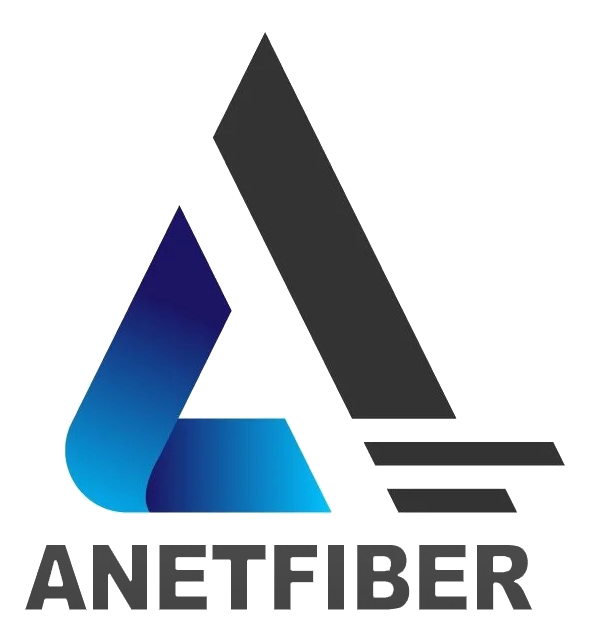The Role of Fiber Optics in Renewable Energy Systems

Introduction to Fiber Optics in Renewable Energy
In the realm of renewable energy, the integration of fiber optics has emerged as a pivotal technological advancement. Understanding the role of fiber optics in this context involves delving into its basics and recognizing its significance within renewable energy systems.
Understanding Fiber Optics
Fiber optic technology operates on the principle of transmitting data through optical fibers, which are slender, flexible strands made of glass or plastic. The transmission occurs through the medium of light, enabling rapid and efficient communication. The utilization of fiber optics has become increasingly prevalent across various industries due to its capacity for high-speed data transfer and minimal signal loss.
Basics of Fiber Optic Technology
The fundamental components of fiber optic systems include a transmitter, the optical fiber itself for signal propagation, and a receiver. As light travels through the fiber, it undergoes total internal reflection, ensuring that the signals reach their intended destination with minimal interference.
Why Fiber Optics Matter in Renewable Energy
The application of fiber optics within renewable energy infrastructure is instrumental in advancing operational capabilities and sustainability efforts. By harnessing the potential of fiber optics, renewable energy systems can achieve heightened levels of efficiency and performance optimization.
The Connection Between Fiber Optics and Renewable Energy
The synergy between fiber optics and renewable energy is multifaceted, encompassing various aspects that contribute to overall system enhancement.
Enhancing Energy Efficiency
Integrating fiber optic technology into renewable energy infrastructure facilitates streamlined operations and enhanced energy efficiency. This integration enables precise monitoring and control mechanisms that minimize energy wastage while maximizing output.
Improving System Monitoring and Maintenance
Fiber optics play a crucial role in enabling real-time monitoring and predictive maintenance within renewable energy systems. This proactive approach ensures early detection of potential issues, thereby reducing downtime and optimizing system longevity.
The Impact of Fiber Optics on Solar Energy Systems
The integration of fiber optics in solar energy systems has revolutionized the monitoring and optimization of renewable energy sources. By leveraging fiber optic technology, solar energy systems can achieve unparalleled levels of efficiency and performance.
Solar Energy Monitoring with Fiber Optics
Real-time Data Collection
One of the key advantages of incorporating fiber optics into solar energy monitoring is the ability to collect real-time data with exceptional precision. The use of optical fibers allows for instantaneous transmission of data regarding solar panel performance, environmental conditions, and energy production. This real-time data collection empowers system operators to make informed decisions promptly, leading to improved overall efficiency.
Monitoring Solar Panels for Optimal Performance
Fiber optic sensors play a pivotal role in continuously monitoring the performance of solar panels within renewable energy systems. These sensors are adept at detecting minute variations in light intensity and temperature, enabling proactive measures to optimize the output of solar panels. By ensuring that each panel operates at its peak capacity, fiber optics contribute significantly to maximizing the overall energy yield from solar installations.
Fiber Optic Sensors in Renewable Energy
Detecting Environmental Changes
The deployment of fiber optic sensors in renewable energy infrastructure enables the detection of environmental changes that could impact system functionality. These sensors are capable of identifying fluctuations in temperature, humidity levels, and other environmental variables that may affect the performance of solar panels. By promptly recognizing these changes, maintenance teams can take preemptive actions to mitigate potential issues and uphold system reliability.
Ensuring the Safety and Longevity of Solar Panels
Fiber optic sensors also play a crucial role in ensuring the safety and longevity of solar panels within renewable energy systems. By continuously monitoring factors such as heat distribution and material stress, these sensors provide early warnings for potential hazards or structural degradation. This proactive approach not only safeguards the integrity of solar panels but also contributes to prolonging their operational lifespan.
Wind Power Enhancement Through Fiber Optics
The integration of fiber optics in the realm of wind power presents a harmonious synergy that elevates the monitoring and maintenance of renewable energy systems to unprecedented levels of precision and efficiency.
Wind Power and Fiber Optics: A Perfect Match
Fiber Optics for Wind Turbine Monitoring
The utilization of fiber optics for wind turbine monitoring introduces a paradigm shift in the approach to overseeing the performance and condition of these vital components within wind energy infrastructure. By employing optical fibers, operators can capture real-time data on turbine speed, blade pitch angles, and structural vibrations with exceptional accuracy. This comprehensive monitoring capability enables proactive measures to be taken promptly, ensuring optimal turbine functionality and longevity.
Wind Turbine Maintenance with Fiber Optics
The application of fiber optic technology in wind turbine maintenance revolutionizes traditional upkeep practices by enabling continuous, non-invasive monitoring of critical components. Optical sensors embedded within turbines facilitate the detection of minute changes in temperature, strain, and mechanical stress, providing invaluable insights into potential maintenance requirements. This proactive approach minimizes downtime and reduces overall maintenance costs while enhancing the operational reliability of wind turbines.
Advantages of Using Fiber Optics in Wind Energy
Reducing Downtime and Maintenance Costs
The incorporation of fiber optics in wind energy systems yields substantial advantages in terms of minimizing downtime and associated maintenance expenses. The ability to proactively monitor turbine performance and detect early signs of wear or malfunction empowers operators to address issues swiftly, thereby mitigating the risk of unexpected failures. As a result, scheduled maintenance activities become more targeted and efficient, leading to cost savings and uninterrupted energy generation.
Increasing Wind Turbine Efficiency and Output
By leveraging the capabilities of fiber optic technology, wind energy systems can achieve heightened levels of operational efficiency and output optimization. The precise monitoring facilitated by fiber optics allows for dynamic adjustments to turbine operations based on real-time data insights. This adaptive approach ensures that each turbine operates at its peak capacity under varying environmental conditions, ultimately contributing to enhanced energy yield from wind power installations.
Future Trends in Fiber Optics for Green Energy Technology
As the landscape of renewable energy continues to evolve, ongoing innovations in fiber optics are poised to redefine the capabilities and applications of sustainable energy solutions.
Innovations in Fiber Optics Renewable Energy
New Developments in Fiber Optic Sensors
Recent advancements in fiber optic sensors have unlocked unprecedented potential for enhancing the performance and reliability of renewable energy systems. These sensors, leveraging the principles of light transmission, have undergone significant refinements to enable finer measurements and more comprehensive data collection. By integrating these cutting-edge sensors into solar and wind energy infrastructure, operators can gain deeper insights into environmental variables, equipment conditions, and energy production dynamics. As a result, the seamless synergy between fiber optics and renewable energy is further strengthened, paving the way for heightened operational efficiency and sustainability.
Expanding Applications in Renewable Energy Systems
The expanding scope of fiber optics within renewable energy systems extends beyond conventional monitoring and maintenance functions. Emerging applications encompass diverse facets such as advanced fault detection, dynamic load balancing, and adaptive control mechanisms. These progressive developments not only elevate the overall performance of renewable energy installations but also contribute to fostering a more resilient and responsive energy ecosystem. By harnessing the versatility of fiber optic technology across an array of renewable energy applications, stakeholders can unlock new avenues for optimizing resource utilization and minimizing environmental impact.
The Future of Energy Efficiency Solutions
The Role of Fiber Optics in Next-Generation Renewable Energy
As the pursuit of next-generation renewable energy intensifies, fiber optics are positioned as pivotal enablers of this transformative trajectory. The seamless integration of fiber optic networks within future renewable energy landscapes promises unparalleled levels of system intelligence, autonomy, and adaptability. This convergence empowers renewable energy systems to operate with heightened precision, resilience, and responsiveness to dynamic environmental conditions. Through real-time data insights facilitated by fiber optics, next-generation renewable energy solutions can proactively optimize resource allocation while mitigating operational inefficiencies.
Predictions for Fiber Optics in Energy Sustainability
Looking ahead, the trajectory of fiber optics within the realm of energy sustainability is poised to witness exponential growth and diversification. Forecasts indicate that fiber optic technologies will permeate an increasingly broad spectrum of renewable energy domains, ranging from geothermal power plants to marine-based wind farms. This pervasive integration is anticipated to yield substantial advancements in operational reliability, predictive maintenance capabilities, and adaptive performance optimization strategies. Consequently, fiber optics will emerge as a linchpin in fortifying the long-term sustainability and viability of global renewable energy infrastructures.
Conclusion
In conclusion, the integration of fiber optics in the domain of renewable energy represents a transformative advancement with far-reaching implications for the sustainability and efficiency of energy systems. The key takeaways underscore the pivotal role played by fiber optics in enhancing the operational capabilities and longevity of renewable energy infrastructure.
Key Takeaways
The seamless integration of fiber optics within renewable energy systems enables heightened levels of operational efficiency, real-time monitoring, and predictive maintenance.
Fiber optic technology empowers renewable energy installations to achieve unparalleled precision in data collection, environmental monitoring, and performance optimization.
The utilization of fiber optics in renewable energy applications extends beyond conventional monitoring functions, encompassing diverse facets such as fault detection, load balancing, and adaptive control mechanisms.
The Future Outlook for Fiber Optics in Renewable Energy
The future outlook for fiber optics in the realm of renewable energy is poised to witness exponential growth and diversification. As sustainable energy solutions continue to evolve, fiber optic technologies will permeate an increasingly broad spectrum of renewable energy domains. This pervasive integration is anticipated to yield substantial advancements in operational reliability, predictive maintenance capabilities, and adaptive performance optimization strategies. Consequently, fiber optics will emerge as a linchpin in fortifying the long-term sustainability and viability of global renewable energy infrastructures.


